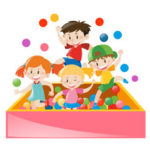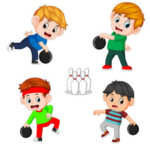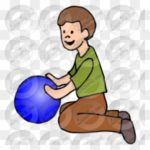
by Neetu | May 31, 2021 | Manthan
Learning Outcome
This activity develops hand-eye coordination, gross motor control, and the ability to track moving objects in the air. These skills transfer to sports and activities that involve striking or catching an object in the air (e.g., balls, frisbees, ribbons, sticks, batons).
Activity Description
Blow up a few balloons of the round type.
Inflate to medium pressure, so the balloon floats a bit but not too much.
Toss one balloon into the air above your head.
Show your child how to keep up the balloon using fingertips and palms.
Challenge your child to take a turn keeping the balloon in the air.
If the balloon touches the ground, switch turns.
After a while practicing, try a competition where you count your touches out loud before the balloon hits the ground.
Try with two balloons at the same time, one balloon each see who keeps up their balloon longest.
See if you can keep up two or three balloons at the same time.
Keep up the balloon with different body parts (knees only, feet only, elbows only, head only).
Required Material
4 Boundary cone, Balloon

by Neetu | May 31, 2021 | Manthan
Learning Outcome
Follow the instructions and engage in different locomotor skills and demonstrate 3 different pathways while doing the activity. Experiment with different ways of tossing and then catching a scarf.
Activity Description
Shapes & Directions
Scarf in front of the body, make giant clockwise circles.
Scarf overhead, make small counterclockwise circles.
Scarf out to the right side, make a square.
Scarf out to the left side, make a triangle.
Switch hands and repeat all of the above.
Locomotor Moves
Scarf like a horse’s tail, gallop in open space.
Scarf scrunched like a rabbit’s tail, jump in open space.
Fold in half like a deer’s short tail, leap in open space.
Scarf long like a cheetah’s tail, run in open space.
Required Material
4 Boundary cone, 2 scarf
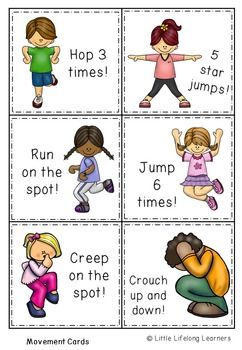
by Neetu | May 31, 2021 | 1st, Fitness Activity, Manthan
Learning Outcome
Today you are going to perform the locomotor skill – Hopping.
Activity Description
When “Teacher says…”, children look at what the Teacher is doing and then follow the command.
Signal to the children to stop after 5-10 seconds, then gives a new command.
If I do not say “Simon says…” before a command, children should remain still.
Once the leader has done several commands, children may be given turns to lead the activity.
Suggestions for commands:
Jump on the spot, Hop on the spot on one foot, March like a soldier on the spot (knees up), Walk around slowly, Follow the leader while walking quickly, Jump around on two feet, Hop around on one foot, Skip around, Walk like a crab, Walk like a duck, Leap like a frog.
Place hoops around the activity space (one hoop per child).
Explain that the hoops are islands.
Call out a way for children to move (see Activity 1 above).
Children must move around the “water” between and around the islands (hoops).
When I call “shark attack!”, children must jump onto an island to be safe.
Once you have played a few rounds, take away half of the hoops.
Children are now allowed to “share” their island with one other friend.
Required Material
4 Boundary cone
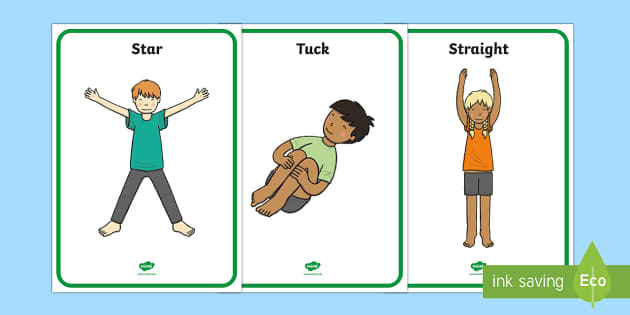
by Neetu | May 31, 2021 | Manthan
Learning Outcome
How to find personal space with the help of bubble
Activity Description
Explain that the children will now make shapes with their bodies within their space bubble.
Demonstrate that the space bubble gets bigger or smaller depending on the size of the shape.
Ask the children to imitate you as you make the following shapes:
Star (arms and legs stretched wide, standing or lying down)
Ball (crouch and tuck as small as possible)
Candle (stand straight and tall with arms above head)
Flamingo (stand on one leg with arms out to sides)
Give the children an opportunity to invent their own shapes.
If time permits, ask a few students to demonstrate their shapes and ask the rest to imitate
Required Material
4 Boundary cone, Spot marker

by Neetu | May 28, 2021 | Manthan
Learning Outcome
This activity develops dynamic balance, coordination, and rhythm required for activities at older ages such as running, skipping, hopping, and dancing.
Activity Description
Make sure your child has practiced galloping before they try to skip.
Show your child how to skip by skipping in a circle.
Tip: skipping is stepping forward with one foot, hopping once on that foot, and then quickly stepping with your other foot and repeating.
Teach your child the song “Skip to My Lou” while clapping the rhythm.
Ask your child to follow you as you both skip in a circle and sing.
Variations
Words:
Lou, Lou, skip to my Lou, (3x)
Skip to my Lou, my darlin’.
Fly’s in the buttermilk, shoo, fly, shoo (3x)
Skip to my Lou, my darlin’.
There’s a little red wagon, Paint it blue (3x)
Skip to my Lou, my darlin’.
Cat’s in the cream jar, Ooh, ooh, ooh (3x)
Skip to my Lou, my darlin’.
Lost my partner, what’ll I do? (3x)
Skip to my Lou, my darlin’.
Skip, skip, skip to my Lou, (3x)
Skip to my Lou, my darlin’.
Required Material
4 Boundary cone








